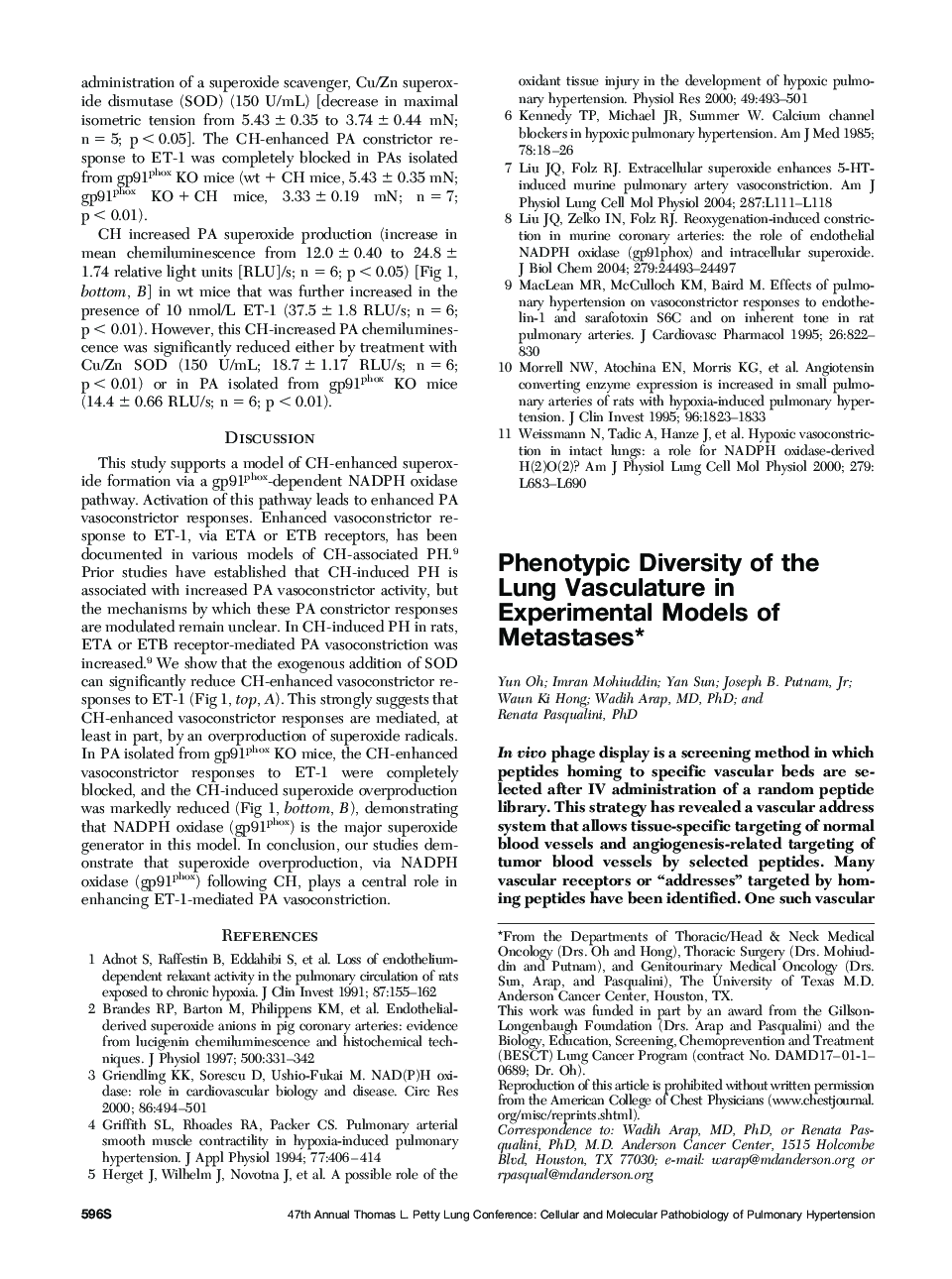| Article ID | Journal | Published Year | Pages | File Type |
|---|---|---|---|---|
| 9161563 | Chest | 2005 | 5 Pages |
Abstract
In vivo phage display is a screening method in which peptides homing to specific vascular beds are selected after IV administration of a random peptide library. This strategy has revealed a vascular address system that allows tissue-specific targeting of normal blood vessels and angiogenesis-related targeting of tumor blood vessels by selected peptides. Many vascular receptors or “addresses” targeted by homing peptides have been identified. One such vascular receptor of normal lung endothelium is membrane dipeptidase (MDP), which was found by in vivo phage display to bind the tripeptide motif gly-phe-glu (GFE). Our studies with GFE peptide and lung vasculature suggest that MDP mediates cancer cell adhesion to lung vasculature and the development of lung metastases, but that MDP is not present in the vasculature of lung metastases. MDP appears to occupy a vascular distribution that is similar to the pulmonary artery circulation. These results demonstrate the promise of defining critical functional and anatomic characteristics of endothelial cells in lung and other organs by in vivo phage display.
Keywords
Related Topics
Health Sciences
Medicine and Dentistry
Cardiology and Cardiovascular Medicine
Authors
Oh Yun, Mohiuddin Imran, Sun Yan, Putnam Jr, Hong Waun Ki, Arap MD, PhD, Pasqualini PhD,
